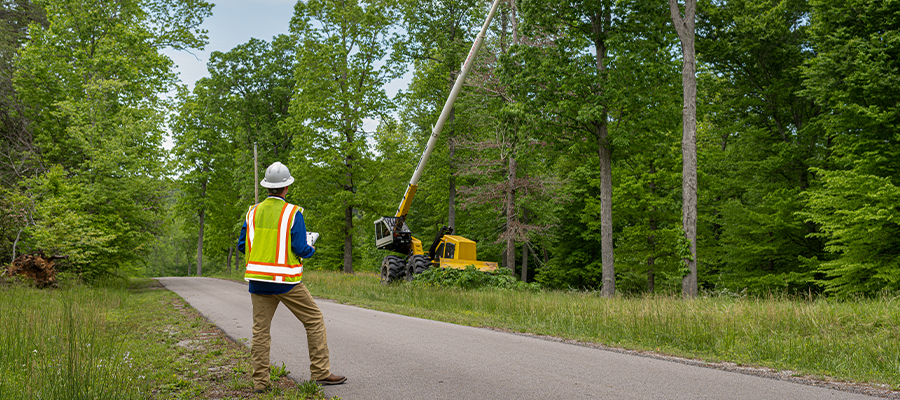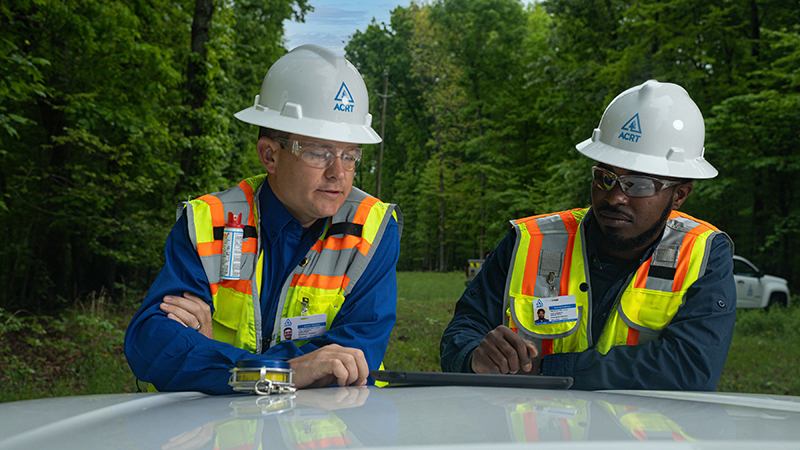- Vegetation Management Services
- Industries
- In Your Neighborhood
- About
- Careers
- Webinars
- Articles
Tree Crew Audits and Assessments: Key Differences and Benefits

Tree Crew Audits and Assessments: Key Differences and Benefits
The arboricultural industry operates in high-risk environments where safety and efficiency are paramount. Conducting thorough safety audits and worker assessments can significantly enhance crew performance and workplace safety. This article explores the distinctions between assessments and audits, the role of contractors versus internal resources, and the essential strategies for implementing effective programs.

Master Work Planning with CUFs
See how CUFs transform work planning and auditing.
Assessments vs. Safety Audits: Understanding the Difference
Assessments focus on observing crew work behaviors and job proficiency. For example, assessing whether a bucket operator is correctly positioned and using proper safety equipment is an essential part of this process. Safety audits, on the other hand, evaluate safety-driven behaviors, such as ensuring wheel chocks are in place and chainsaws are handled safely. While both methods are critical, audits are more compliance-oriented, while assessments delve into proficiency and behavior.
Contractors vs. Internal Resources
Organizations may choose between third-party contractors and internal resources to conduct audits and assessments. Contractors, often less intrusive, focus on observation and intervene only in life-threatening situations. Internal resources, familiar with the organization’s culture, can offer tailored feedback and immediate corrections. Both play vital roles, depending on the organization’s goals and resources.
The Importance of Data Collection
Data collected during audits and assessments serve multiple purposes:
- Safety Improvements: Identifying patterns, such as improper use of wheel chocks, allows organizations to address training gaps.
- Performance Metrics: Monitoring trends across individuals, crews, and groups helps establish a consistent safety culture.
- Regulatory Compliance: Documented audits provide evidence of safety practices, mitigating legal and insurance risks.
For instance, organizations with a haphazard approach to safety face higher scrutiny from regulators and insurers, impacting their reputation and bottom line.
Key Metrics for Audits and Assessments
When evaluating tree crews, consider the following:
- Individual Proficiency: Can workers operate equipment like chainsaws and chippers correctly? Are they adhering to safety protocols, such as proper tie-ins during tree ascents?
- Crew Dynamics: Does the crew communicate effectively? Are roles clearly defined to minimize risks?
- Group Consistency: Do safety practices align across teams under a general foreman?
Tools and Methods for Effective Implementation
A successful program relies on clear communication and systematic data collection. Organizations can use traditional paper forms or digital tools, with the latter offering advantages like real-time data sharing and secure cloud storage.
Leveraging Industry Resources
Several industry resources can support tree crew audits and assessments. The Tree Care Industry Association (TCIA) provides best practices, certifications, and safety training programs tailored to arborists. The International Society of Arboriculture (ISA) offers education, credentialing, and guidelines for enhancing safety and operational excellence. Additionally, the ANSI Z133 Safety Standards outline essential safety requirements for arboricultural operations, serving as a benchmark for compliance and risk mitigation. Leveraging these resources can help organizations implement effective safety programs and foster a culture of continuous improvement.
Training and Feedback
Addressing training gaps is one of the most impactful outcomes of audits and assessments. Regular feedback sessions help workers improve their skills and align with organizational safety standards. For example, a worker repeatedly misplacing wheel chocks might benefit from hands-on training rather than punitive measures.
Building a Culture of Safety
Introducing a safety program requires careful planning and communication. Workers must understand that the initiative aims to enhance their safety and performance, not penalize them. Providing consistent feedback, recognizing positive behaviors, and addressing issues constructively fosters a culture of trust and accountability.
Leveraging Data for Growth
Beyond improving safety, audits and assessments can identify potential leaders within the workforce. Workers demonstrating high proficiency and safety standards can be mentored for leadership roles, fostering internal growth and succession planning.
Conclusion
Safety audits and worker assessments are not just compliance tools; they are strategic instruments for enhancing safety, performance, and organizational growth. By implementing a structured program, arboricultural organizations can minimize risks, improve efficiency, and build a skilled, safety-conscious workforce.
By fostering a consistent and transparent safety culture, the industry can set benchmarks for excellence, ensuring the well-being of workers and the communities they serve.
Ensure your crews are working safely and efficiently with the support of industry-leading expertise. At ACRT, we specialize in customized safety auditing and worker assessment programs that align with your organization’s goals. Our services are designed to identify training gaps, enhance performance, and foster a culture of safety and growth.
Ready to elevate your safety standards? Contact ACRT today to learn more about our tailored solutions for arboricultural teams.
Related Articles

Servant Leadership in Utility Vegetation Management By C. Troy Ross, President, ACRT and ACRT Pacific On a chilly Monday morning, a utility vegetation management crew gathers for their weekly briefing. Instead of launching into instructions, their supervisor begins by asking each team member how they’re doing. One mentions a child’s illness, another shares excitement about[...]
Read More
Turning Vegetation Waste into Opportunity By Aana Agrawal, Sustainability and Resilience Manager, EnviroScience The utility vegetation management (UVM) sector plays a crucial role in ensuring the smooth transmission of power across regions and cities by keeping plant growth under control within the vicinity of transmission and distribution lines. However, unrefined vegetation maintenance practices often focus[...]
Read More
Reflections from Will Nutter Silver Shield Award Recipients By Bob Urban, Senior Manager, ACRT Services In an industry where the stakes are high and every decision can have life-altering consequences, leadership in utility arboriculture isn’t just a managerial function; it’s a calling. Nowhere is this more evident than in the recipients of the Will Nutter[...]
Read More
The Electric Butterfly: Reconnecting with Nature on the Edges By Ryan Meccage, Business Development Manager, ACRT Services In an age dominated by smartphones, constant connectivity, and algorithm-driven content, we’ve never been more digitally immersed. Yet somehow, we’ve also never felt so far removed from the natural world beneath our feet. The urge to step away[...]
Read MoreRecent Posts
- Alex Fields Awarded ACRT Safety Challenge Coin 20th Nov 2025
- Servant Leadership in Utility Vegetation Management 12th Nov 2025
- ACRT Honors Our Veterans 10th Nov 2025
- Anna Davis Awarded Safety Challenge Coin 04th Nov 2025
- ACRT Senior Consulting Utility Forester Recognized as Safety Superstar 15th Oct 2025
Categories
The Leader In Vegetation Management
We are all about people, and we put safety first. Ready to work with our well-trained team?